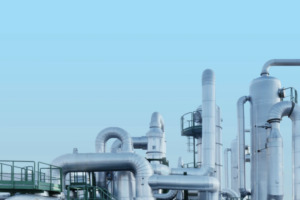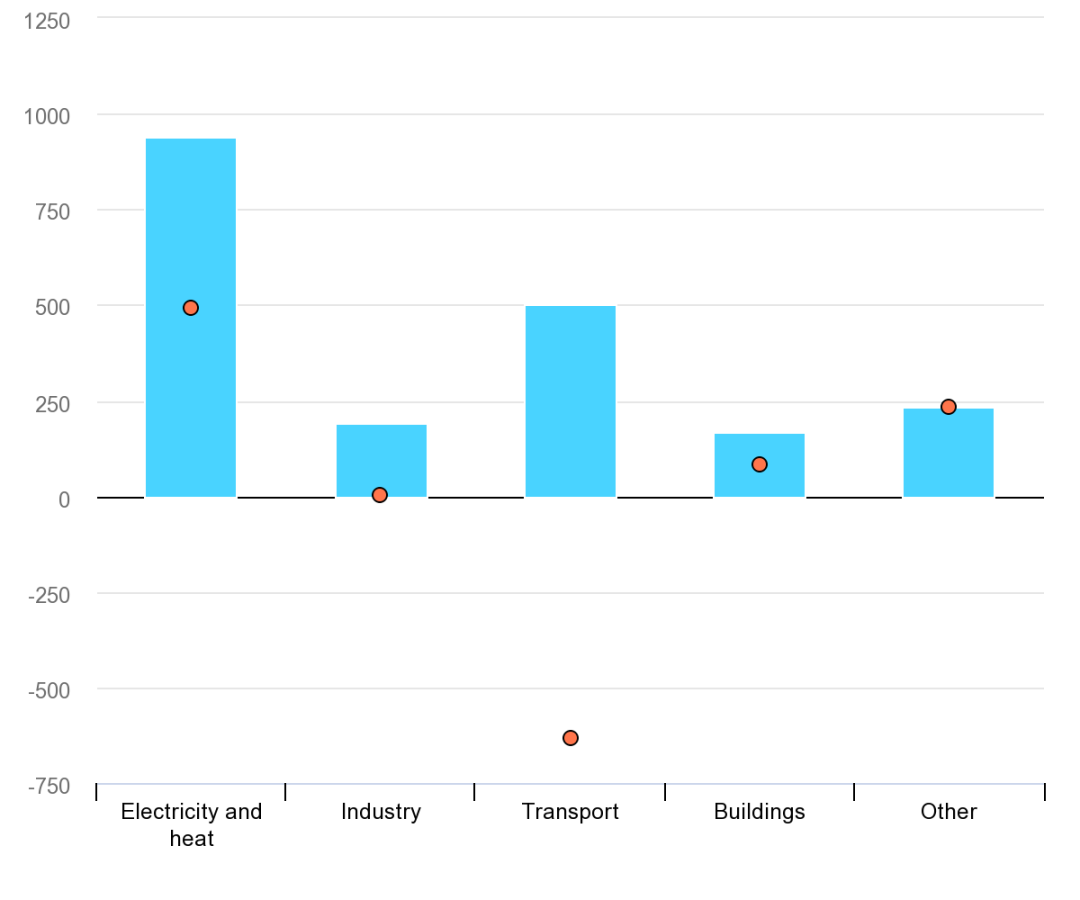Command Palette
Search for a command to run...
Application Example of Machine Learning in Chemistry: A post-90s Scholar Spent Eight Years on the Road to Becoming a Doctoral Student, Using Machine Learning to Boost Chemical Engineering Research

This article was first published on the official account: HyperAI Contents at a glance:As a hot technology in the past two years, ScienceAI has attracted widespread attention and discussion in the industry. This article will focus on a paper from ScienceAdvances and introduce how to use machine learning to predict amine emissions from coal-fired power plants. Keywords:AI for Science Chemical Engineering Amine Emissions
A report released by the International Energy Agency shows that global energy-related CO2 emissions in 2021 increased by 6% from 2020, reaching 36.3 billion tons, a record high.
The largest increase in CO2 emissions was in the power generation and heating industries.The increase is more than 900 million tons, accounting for 46% of the global CO2 emission increase. It is urgent to control and reduce CO2 emissions in the power generation and heating industries.

View the full report on global CO2 emissions in 2021
Carbon capture: reducing greenhouse gas emissions and turning waste into treasure
In the "Research on the Development Path of Carbon Peaking and Carbon Neutrality in China's Power Industry",Industry experts have proposed three changes to reduce CO2 emissions in the power industry:
1.Vigorously develop low-carbon power sources such as wind power, hydropower, and nuclear power, and abandon high-carbon power sources such as coal power and oil power
2.For coal-fired power plants, use low-carbon fuels such as natural gas, straw, and biomass to replace coal for power generation
3.Using carbon capture technology to capture and utilize CO2 emitted by coal-fired power plants
in,Carbon capture has the ability to transform waste into treasure, due to its small transformation scope, large imagination space, and ability to turn waste into treasure.It has attracted much attention from commercial companies, energy companies and scientific research institutes in the power industry.

Carbon capture refers to the reaction between CO2 and amine substances.Capture the CO2 released into the atmosphere by power plants, compress it, and seal it in depleted oil fields, natural gas fields, or other safe underground locations for subsequent use in oil extraction, smelting, automobiles and other industries.
However, when CO2 reacts with amines, it also produces amine emissions that are harmful to public health and the ecosystem.Effectively monitoring and predicting amine emissions from different power plants has become a major difficulty in carbon capture.
Recently, a research team composed of EPFL and Heriot-Watt University has developed a machine learning method that can use the past data of power plants toMore accurate prediction of harmful amine gas emissions from carbon capture processes.The paper has been published in Science Advances.

Paper details: Using machine learning techniques to solve chemical problems
1. Pilot factory test
Carbon capture plants are complex because process models typically focus on capturing steady-state operation. However, the design and operation of current and future power plants need to take into account the increasing share of renewable energy generation, which is intermittent and irregular.Therefore, dynamic and multivariate behaviors running outside of steady-state also need to be considered.
In order to simulate the intermittent operation of future power plants, researchers conducted a series of stress tests on the capture device at the pilot plant of the Niederaußem power plant in Germany, trying to find the relationship between the intermittent operation of the power plant and amine emissions.

Although the experiment has accumulated a large amount of data capturing the behavior of the factory, it is impossible to use this data to qualitatively predict future amine emissions.Because in addition to the stress test, there is another variable in the experimental process – the intervention of power plant professionals to ensure the safe operation of the plant during the experiment.
2. Get the dataset
In the pilot plant experiment, researchers collected data every 5 minutes and accumulated a huge amount of data.How to convert this data into data sets that can be used by machine learning models has become a research focus.
The researchers' approach is to combine time-dependent process and emission data.Represented as an image (data matrix),Based on this, a predictive model is created, and then pattern recognition is performed with the help of machine learning techniques to predict amine emissions.
In this representation, the plant defines a state feature vector x(t) at a given time t, where the p elements represent process variables (such as flue gas temperature and water wash temperature).
Take the factory state vector at t timestamps and get a t × p matrix. This matrix can be regarded as an "image" connected to the future emission curve y(t).

The data used in this experiment can be regarded as an "image", in which:
Width = length of input sequence (T)
Height = number of parameters p
Color = the value of parameter xj at a certain time ti
Next, we link patterns in the historical image of the factory to specific future emissions.The researchers used a gradient-enhanced decision tree model.The rows describing the different parameters and emissions are combined into one long vector. The model is trained with quantile loss to obtain an uncertainty estimate.
When assessing uncertainty,The researchers used a temporal convolutional neural network that supports Monte Carlo dropout.The results obtained using this model are shown in note S8.
With this dataset, we can use data science methods to develop a machine learning model for data analysis.
3. Gaining insights into amine emissions from machine learning
Next, you can use the machine learning model to make the following predictions:
1. Future emissions (real time):Based on historical & current operation and emissions, predict emissions for the next x hours
2. Causal impact analysis of data:To measure the impact of a specific stress test on amine emissions, a baseline is needed to provide the amine emissions without the stress test.
3. Reduce amine emissions:Use models to predict emissions under “what-if” scenarios, such as whether lowering the wash water temperature would have an impact on emissions

A post-90s academic master with 8 years of experience in chemistry
This paper was published by a research team led by Professor Berend Smit of the School of Basic Sciences at the Federal Institute of Technology in Lausanne and Professor Susana Garcia of the Center for Carbon Solutions Research at Heriot-Watt University in Scotland.
Among them, students developed a machine learning approach to transform the amine emission problem into a pattern recognition problem.It was Kevin Maik Jablonka, a post-90s doctoral student in Professor Smit’s group.

Kevin studied chemistry at the Technical University of Munich in Germany. After graduating in 2017, Kevin entered the Swiss Federal Institute of Technology in Lausanne to continue his master's and doctoral studies in the field of chemistry.
From 2014 to 2022, Kevin spent 8 years building a deep understanding of chemistry and chemical engineering, during which time he also studied applied data science and machine learning.Combining chemical research with artificial intelligence,He has improved the efficiency and accuracy of research in the field of chemical engineering and is truly a top student born in the 1990s.
As many senior people in the field of chemistry have said,Machine learning may have a greater impact in the fields of chemistry and process engineering than in computer vision.
In CV application scenarios, the model learns the basic features of the image.is often closely related to the way the human brain perceives images.Such as target detection and face recognition.
However, in industrial scenarios,Humans often lack understanding of the basic mechanisms,But through machine learning, researchers have discovered basic rules for mapping parameters to target observations and made predictions about hitherto unpredictable phenomena.
In the case of predicting amine emissions from power plants, machine learning outperforms traditional methods.It is considered to provide a new perspective for observing complex chemical processes.It is very likely to completely change the way coal-fired power plants are operated in the future.
Artificial intelligence will be used more in basic scientific research to provide power, improve efficiency, and accelerate the implementation of scientific research results. How do you view the development of AI for Science in the second half? What breakthroughs will it bring, and what challenges will it face?Welcome to leave a message to share your views and opinions~
In the future, Super Neuro will pay attention to more ScienceAI related topics. If you are interested, please follow us~